Text
Everything about Pink Diamonds | Jewel Hero
Everything You Need To Know About Pink Diamonds
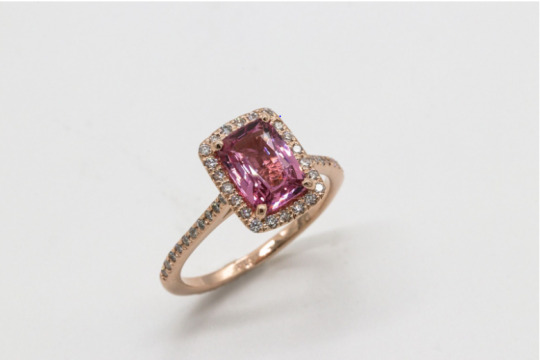
Pink diamonds constitute the rarest kind of diamonds that are found on this planet. The pink hue of these diamonds is not caused by any kind of chemical impurities within the stone. The exact cause of the pink color is unknown. Owing to their rarity, a premium quality pink-colored diamond with an intense shade might cost you almost $700,000 per carat.
Found primarily in the Argyle diamond mine in Western Australia, Pink colored diamonds are also found in India, Brazil, South Africa, Russia, and Canada. The rarity of these diamonds account for their worth and popularity. However, are they worth it? Here is everything you need to know about Pink Diamonds
What Are Pink Diamonds?

The name of these diamonds is derived from their color. However, the cause of this signature pink color is unknown to gemologists. In the case of the other colored diamonds, the cause of the color is generally due to the presence of certain impurities within the stone. This is not the case with pink diamonds.
There are several theories as to how these diamonds get their pink color. Certain gemologists believe that the cause for the color is due to the intense pressure that is experienced by the diamond during the time of its formation. Similarly, other theories state that the cause for the color is related to a seismic shock experienced by the diamond that accounts for its molecular alteration.
The exact reason for the unique pink color is unknown. However, owing to the signature color and rarity of these diamonds, they are used to create various kinds of jewelry like engagement rings, bracelets, earrings, etc.
H2: Grading The Color Intensity of Pinks
Pink-colored diamonds are graded on their color intensity. Like any other colored diamond, there might be the presence of other colors along with the dominant pink color.
The GIA grades pink-colored diamonds on the following scale:
Faint
Very Light
Light
Fancy Light
Fancy
Fancy Intense
Fancy Vivid, Fancy Deep, or Fancy Dark
The Argyle color grading system is from 1 to 9, where 9 is the most intense color saturation.
It is very difficult to differentiate between close color grades. It is important to consult an expert when purchasing pink-colored diamonds. It is obvious that the richer the color saturation the more expensive the diamond, but without professional assistance we won’t be able to tell the difference between Fancy color grades and Fancy vivid color grades. However, owing to the price per carat of these diamonds, the price difference will be immense.
The Price of Pink Colored Diamonds
Apart from Red Diamonds, pink colored diamonds are the most expensive naturally occurring diamonds. The 1 carat diamond price of these diamonds vary from $10,000 to up to $700,000. The price per carat depends on the intensity of the color.
Why are these diamonds so expensive? The main reason for such an exorbitant price is due to their color intensity and carat weight. The price of pink-colored diamonds increases exponentially as their carat weight and color intensity increases. For example, the price of a 0.60 carat flawless fancy light orangish pink colored diamond would be around $11,000 but the price of a fancy Purple-Pink diamond with the same specifications would amount to $51,000. The jump is comparatively less between Fancy Intense Pink and Fancy Pink colored diamonds.
The price of a 0.30 to 0.35-carat Fancy Intense Purple Pink Round SI2 stone will be about $14,000, whereas the price with the same specifications of a Fancy Pink would be around $18,000. The jump between Fancy Intense Pink and Fancy Vivid Pink is very large. For example, a 0.50-carat Fancy Intense Purplish Pink diamond would be around $59,000 whereas a Fancy Vivid Purplish Pink stone would cost about $175,000.
The presence of these secondary colors within the stone also impacts the price of your pink-colored diamond. The diamond would be priced higher if it is without a modifier. The other reasons that affect the price of this diamond are rarity and popularity. Although Pinks are available in different parts of the world, only a few pieces are mined every year. The popularity of Pinks soared when Ben Affleck proposed to Jennifer Lopez with one of them
Naturally occurring pinks are well beyond the reach of the common man, however, an affordable alternative to these is lab-created pink diamonds.
Pink Diamond Engagement Rings
Owing to their signature color, these diamonds are an excellent choice for engagement rings. Here are a few settings that suit them the best.
Three Stone Setting
The best part about a three-stone setting is that you can choose a pink-colored diamond of a lesser carat weight. Pairing them with the right diamond or gem flank stones will give you a one-of-a-kind diamond engagement ring.
Halo Setting
This setting allows you to enhance the color, brilliance, and size of your pink-colored diamond. You can enhance all of these qualities by going for a double Halo setting as well. A double halo setting is simply adding a second layer of melee diamonds or any other accent stones to the existing row of accent diamonds.
Pink-colored diamonds are a popular choice for all kinds of jewelry as well. From earrings to bracelets, they are used in all forms of diamond jewelry owing to their popularity.
The Best Place to Buy Pink Diamonds
It is important to have a reliable jeweler when picking out Pink diamonds. However, finding the right jeweler can be tiring. We at Jewel Hero have come up with the best solution to tracking down the best local jewelry stores near you. All you have to do is log in to our website and fill in the relevant information about your choice of diamonds. We will be giving you a list of jewelers near you with whom you have the option of connecting virtually. So what are you waiting for? Visit our website today and get closer to buying the diamond of your dreams.
0 notes
Text
How to Spot Fake Diamonds?
If you are eager to buy diamonds but have no prior knowledge, it can be challenging to differentiate real from fake diamonds.
Several diamond simulants are available in the market. Common white stones are cubic zirconia, moissanite white topaz, quartz (rock crystal), white sapphire, white zircon, and white spinel. They may, however, have different physical, chemical, or optical properties.
With the help of the following tests, learn to spot fake diamonds that are white gems or manufactured imitations. The most reliable test may be the thermal and electrical conductivity tests carried out by jewelers using expensive advanced machines.
Remember, laboratory-manufactured diamonds are pretty similar to mined diamonds. Therefore, they may pass most of the tests. Hence, the only option then would be to get it tested at the gemological laboratory.
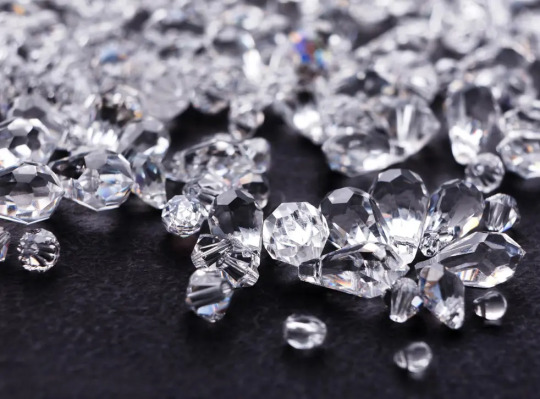
Learn to Differentiate Natural Diamonds from Fake Diamonds.
This article will discuss various tests that will help you know if your dollars are worth the diamond in hand. If you are making the purchase, you won't be able to self-test the diamonds. In that scenario, buying from a reputable jeweler can provide a good return policy.
Diamonds with no laboratory-grade reports can be sent back for retesting. The best option is to get GIA-certified diamonds. However, with graded lab reports and reliable dealers, it shouldn't be an issue. If you received diamonds as gifts and want to check their authenticity, the following tests come in handy.
Either way, it is always better to know about diamonds and their legitimacy than be in denial by purchasing fake diamonds.
Tests Conducted to Differentiate Between Genuine and Fake Diamonds.
Tests you may try out at home.
Dot/ Newspaper Test
Natural diamonds refract light from their facets in different directions that aren't in a straight line. So it becomes hard to read anything.
Try placing the diamond with its face side down, facing the newspaper. If it's facing a part of the newspaper with many letters and no external shadow is cast upon it, you won't be able to read the letters from above if it's a real diamond. Even hazy writing would mean the stone is fake.
Reflection Test
It deals with the quantity of light reflected on the diamond. Hold the diamond close to a light source to observe clear and bright shimmer and reflections, to conclude if it's real. If it isn't real, the gemstone will reflect light vaguely.
Water Test
The most straightforward technique to detect fake diamonds is by putting them in a glass filled with water. Diamonds have a high density, therefore making them sink to the bottom.
After gently dropping it, if the diamond sinks to the bottom, it can be concluded as a real one. However, if the diamond remains afloat, well, it could be a fake one.
Fog Test
This test is a bit tricky, hence be cautious. Diamonds tend to disperse heat quickly after conducting it. Take the diamond in between your fingers and blow a breath of air. Its warmth and moisture will make the stone foggy.
If the fog dissipates as soon as it is created, you have a winner here. On the downside, if the fog takes a while to go away, it's time to rethink your buying decisions.
Setting and Mount Test
A real diamond is likely to be set on expensive metals like platinum, gold, or silver. It would have markings like 10K, 14K to determine its gold or PT for platinum with numbers like 770, 585 to indicate it mounted on gold or platinum. If it has markings like CZ, it is not a natural diamond but a similar gemstone with a cheap setting, proving it to be fake.
Shatter Test
A natural diamond is unresponsive to heat. A fake one would meet a sad demise when exposed to it. Therefore, using a heat-proof container hold the diamond with pliers and heat it for approximately 40 seconds.
Drop the heated diamond immediately in a water-filled container. Fake diamonds will crack directly under the high tension, whereas natural diamonds will remain intact.
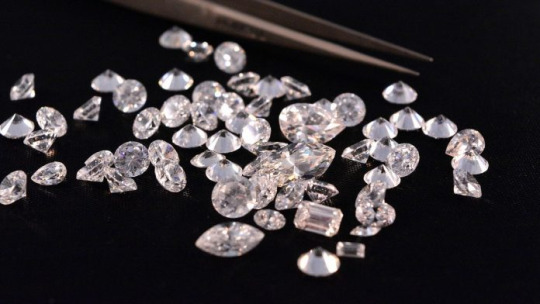
Scratch test
If the test scratches the stone surface, it could be a gem of lesser hardness but not necessarily a diamond. For example, suppose the gem scratched a quartz crystal surface, then it could be any imitation. If it doesn't, then the gem is simply glass.
Likewise, if the stone scratched the corundum surface, it could be a natural diamond, white sapphire, or moissanite.
Professional Tests to Check If Your Diamonds Are Real or Fake.
Clarity Imperfections
It is another tricky test to master. Gemologists look for imperfections like dark or light spots, minute crystals of the gem in hand. If any bubble is noticed, it could be because the gem isn't diamond but cubic zirconia and glass, creating bubbles in its structure.
Electrical Conductivity
Real diamonds are better conductors of electricity in comparison to fake diamonds. Hence, to determine the genuineness of diamonds, jewelers usually conduct the electrical conductivity test.
Facet Doubling and Facet Edges Using a Loupe
Before digging into the test and its techniques, know what a loupe is. It is a specialized magnifying glass known for identifying any inclusion or blemish in a diamond.
A natural diamond is created under intense heat and pressure below the earth's surface. Hence, it is bound to have blemishes and inclusions on its surface.
Jewelers can observe fuzzy and doubly refracted back facets from the top view with the help of loupes.
If the gem is crystal clear with sharp and single refractive lines, it isn't a real diamond but a diamond substitute that you might have purchased.
High-End Weighing
Specialized lab-based scales are available to weigh diamonds. Keep in mind real diamonds weigh far less compared to fake diamonds or lookalike gemstones.
Thermal Conductivity Probe
This test determines the rate at which a diamond can disperse heat. A fake diamond will tend to dissipate heat at a slower pace compared to real diamonds.
However, this test can seem confusing for many jewelers since moissanite gemstone, a diamond lookalike, can also easily pass this test. Hence most gemologists may find this test unreliable.
Choosing The Right Diamond
The right jeweler will always ensure that you don’t get stuck with fake diamonds. However, finding the right jeweler can be quite a task. Jewel Hero brings you the ultimate solution for this perpetual problem. Our amazing algorithm is designed for enthusiastic buyers to find the right jewelers.
All you have to do is log in to our website and fill in the details of your purchase. That is all it takes. Our algorithm will be direct you to a list of jewelers near you. You can choose to connect virtually with these jewelers if you want. So what are you waiting for? Visit our website today and get a step closer to buying the diamond of your dreams.
0 notes
Text
How Important Is Your Diamond's Cut Quality?
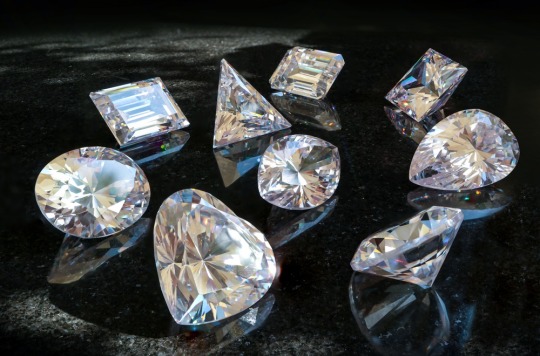
Can you not tell the difference between a $2000 and a $20000 diamond?
Does diamond shopping make you nervous? Do they all look the same?
Well, we are here to help you have a comprehensive idea about identifying good quality diamonds.
While other aspects like the color, clarity and carat weight are important considerations when buying a diamond, the cut quality of your diamond is the most important aspect to consider. It is what should be your prime focus when buying any diamond.
What Is a Diamond Cut?
A 'diamond cut' refers to how well it is proportioned. This includes its symmetry and depth. This is completely different from the shape of a diamond-like, Pear diamond or Heart shaped diamond.
The cut quality of your diamond affects its brilliance and fire.
Fire is the ability of a diamond to disperse white light into a spectrum or a rainbow.
Brilliance refers to the ability of a diamond to reflect that white light back to our eyes, affecting its ability to sparkle.
Different cuts have different degrees of brilliance and fire. If your diamond is too dull, it might be poorly cut. Certain cuts have a high level of brilliance and fire, like a Round Brilliant diamond. Your diamond’s sparkle is dependent on the diamond’s brilliance.
Diamond Shape vs Diamond Cut
The shape of your diamond is its appearance and figure. For example, Heart Shaped Diamond and Marquise Diamond. Reflective quality, facets, symmetry, and depth are all part of a diamond’s cut
The shape of your diamond does not alter, however, the cut quality alters with every single diamond. In fact, the price of your diamond is dependent on the quality of its cut.
What are the Factors That Affect the Cut of a Diamond?
Diamonds are graded from Excellent to Poor by the GIA.
It is the most important aspect of the 4Cs. Your diamond’s cut helps hide inclusions and blemishes in your diamond.
The GIA does not grade the cut quality of fancy diamond shapes like a Marquis cut or a Pear shaped diamond. In this case, the diamond’s table and depth percentage and the length to width ratio are good indicators of its cut quality.

Proportions of your diamond
The table percentage, depth percentage, and length to width ratio make up your diamond’s proportions.
A Diamond's Table
Dividing the width of the top surface area of the diamond by the diameter of the diamond gives us a diamond’s table percentage.
The ability of a diamond to reflect light off its crown angles and facets is due to a large table percentage.
The inability of a diamond to reflect light back to our eyes is owing to a low table percentage.
The ideal table depends on the shape of your diamond.
A Diamond's Width
The measurement from one end of the diamond's girdle to the other gives us the diamond's width.
Width plays a more crucial role in determining the length-to-width ratio of your diamond.
Dividing the length of your diamond by the width gives us the length to width ratio.
Your diamond’s length to width ratio determines how proportionate your diamond is.
A Diamond's Depth
The height of the diamond from the culet to the top of the table determines the depth percentage. It is either measured in percentage
.The inability of your diamond to reflect light back properly is due to its lower depth percentage. This gives a darker appearance to the stone.
Symmetrical Facets of Your Diamond
They surround the table of your diamond. They emulate small mirrors that reflect light onto your eyes.
The ability to reflect and refract light is dependent on the size, placement, and symmetry of your diamond's facets.
Your diamond's cut quality is affected by unproportioned facets, too many facets, and not enough facets
Brilliance of Your Diamond
A diamond's brilliance is its ability to reflect white light.
Your diamond should reflect plenty of light when its table is facing upwards.
If your diamond's cut is too deep or shallow, it will not be able to reflect most of the light through the table.
Fire of Your Diamond
The amount of colored light a diamond is able to reflect off its table and facets is referred to as a diamond's fire.
You should be able to see colored light reflect off your diamond when it is facing up under a source of light.
Scintillation
The sparkles which are caused in your diamond when light reflects off its facets refer to a diamond’s scintillation.
Light and dark areas of your diamond's surface and light passing through them cause these sparkles.
A low scintillation makes your diamond look dull.
Polish
This is the final condition and quality of your diamond's facet details.
A well-polished diamond will have clear mirrors for light to reflect off.
How Can Cut Grade Affect Your Diamond's Price?
Consider the following factors when choosing a diamond.
How do the facets and angles reflect light?
Check your diamond’s light return by placing it under a lamp.
Check for dark spots within your diamond.
Focus on brilliance and fire.
A lifeless or dull diamond is a poorly cut diamond.
Check your GIA certification.
Always buy your diamond from a trusted jeweler.
For GIA-certified diamonds, buy excellent cuts or ideal cut diamonds when choosing AGS certified diamonds
Don’t buy a round diamond without a GIA certification.
Your diamond should look appealing despite the cut quality
Always get an expert’s opinion.
Buying The Right Diamond
The right diamond always requires the right jeweler. Jewel Hero’s amazing algorithm connects enthusiastic buyers with authentic jewelers to make sure you always find the right diamond.
All you have to do is log in to our website and fill out certain details pertaining to what you’re looking for. We will provide you with a list of jewelers near you with whom you can connect virtually.
It is as easy as it sounds and this service is free of charge. So what are you waiting for? Visit our website today and get a step closer to procuring the diamond of your dreams
0 notes
Text
Why Are Princess Cut Diamond Stud Earrings So Popular?
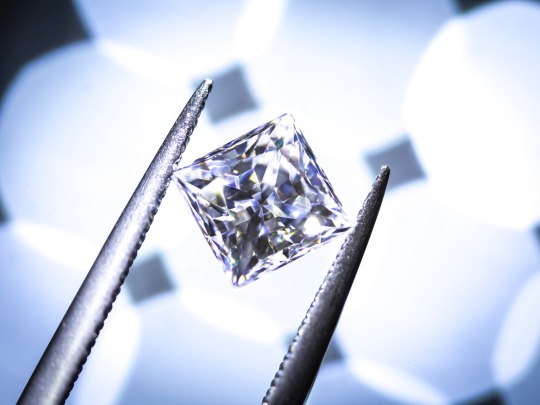
People want more out of diamonds. The trend of diamond stud earrings is getting more popular every day.
Although using diamonds as regular jewelry is a recent phenomenon. People are taking to it fast and want to own more than just diamond rings.
Princess cut diamond stud earrings are the preferred choice of most jewelers and for good reason. Apart from its aesthetic appeal and brilliance, there are other things to consider.
Let’s find out what they are?
What is a Princess Cut Diamond?
Ranking second in the world when it comes to diamond popularity, the Princess diamond is responsible for over 30% of all engagement rings made in the world.
The primary reason for this popularity is due to the enormous yield from the diamond rough. While other diamond cuts have a 35% to 40% yield, the Princess diamonds yield is almost 80% to 90% from the diamond rough.
Also, the Princess cut has brilliance comparable to a Round Brilliant but not the price.
The Shape of a Princess Diamond
This is a square-shaped diamond, in certain cases, it may be rectangular as well depending on the length to width ratio. It has sharp corners with 56 to 58 facets.
A Princess diamond with 25 facets is also pretty common. The appearance of this diamond is dependent on the patterns on the crown and the number of cuts on the pavilion.
Princess diamonds either have Bezel or French corners. The best specimens have an excellent cut grade with amazing symmetry and polish.
History of the Princess Diamond
Princess diamonds were made by Arpad Nagy in 1961. However, they only experienced popularity in the 80s thanks to Betazel Ambar and Israel Itzkowitz
The name ‘Princess Cut’ was given to a definitive cut by Nagy which was referred to as the profile cut. Owing to this trend, certain other square-cut diamonds were given names like The Quadrillion Cut or the Barion Cut.
The evolution of the square-cut diamond into the square modified-brilliant cut was on account of advancements in the field of diamond cutting in the 1960s. This also increased knowledge of light performance in diamonds.
The Cut
This diamond is one of the newest and most evolved of diamond cuts. The GIA does not grade the cut of fancy diamonds. This does not mean that there is no way of determining the cut grade.
The cut grade can be determined by assessing the depth percentage, table percentage, symmetry, and the length to width ratio of a Princess diamond.
Here is how you choose the best possible cut for your Princess diamond stud earrings
Depth - 65%-75%
Table - 65%-78%
Length to Width Ratio - 1 to 1.05
Polish and Symmetry ratings should be ‘Good’ or ‘Excellent’
The girdle of your Princess diamond should be thick enough to support the prongs.
The Clarity
It is best to pick out eye-clean diamonds when it comes to Princess diamonds. Choosing a VS2 clarity grade for GIA or AGS diamonds looks the same unless viewed under 10x magnification. There is no point paying for higher clarity grades when you can hardly notice any differences.
Choosing eye-clean SI2 diamonds is also an option but finding Princess diamonds in this clarity grade is very rare. It is best to avoid diamonds with dark inclusions near the center. Inclusions on the edges might hamper the durability of the stone.
The Color
Princess diamonds radiate color in a much more pronounced manner than other cuts like the Round Cut. This does not mean you have to pay extra for higher color grades.
The color is only noticeable when the diamond is looked at from side to side. No one hardly looks at a diamond this way.
Picking a diamond in accordance with the setting is a good idea. G, H and I color grades work best with platinum or solitaire settings whereas a J color grade is ideal for a rose gold setting.
The Carat Weight
The Princess diamond has a bigger appearance than other diamonds of the same carat weight. Choosing the right Carat weight becomes very important when buying Princess cut diamond stud earrings.
Princess diamonds cost lesser than Round diamonds. For example, a 1 carat, I color Princess diamond of excellent cut quality, and VS2 clarity will cost around $3500 to $4000.
How to Choose The Right Princess Cut Diamond Stud Earring?
Princess diamonds have a modern vibe to them. The aesthetic brilliance of this cut makes it a diamond fit for all occasions. This and the fact that Princess diamonds have a very high yield from the diamond rough, make it the ideal choice for diamond stud earrings.
Judging by the occasion and the need, the carat weight of Princess cut diamond stud earrings may range between 0.25 to 1. Different carat weights accentuate the diamond in different ways.
The right Carat Weight in this scenario is directly related to the amount of panache you want to bring to a certain occasion.
0.56 carats or below is perfect for your Princess cut diamond stud earrings when you already have a fair amount of jewelry on.
Between 0.5 to 1.0 carat is perfect for daily wear.
0.99 carats add a bit of flash to those studs.
1.25 carats are best for date nights and other similar occasions. These studs make a bold statement.
How to Buy Princess Cut Diamond Stud Earrings?
Finding the perfect pair of Princess cut stud earrings can be made easier by the right jeweler. Jewel Hero makes it very easy to connect with authentic jewelers.
All you need to do is log in to our website, tell us what you are looking for, fill in some information and that is it. We will connect you with local jewelers with whom you can even consult online.
Shopping for diamond stud earrings has never been easier. Visit our website today for more information.
0 notes
Text
How Can Knowledge About Diamond Color Help You Get A Great Deal?
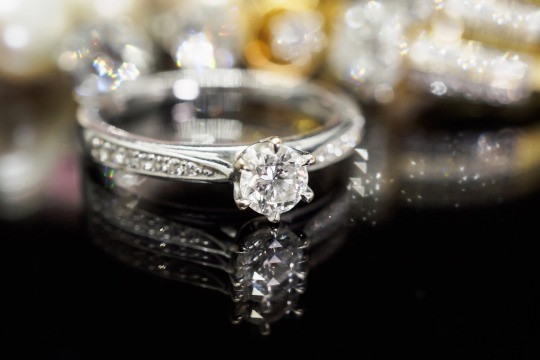
When buying the diamond of your dreams it is always important to focus on the 4Cs. If you are not a diamond expert, however, figuring out the intricacies of cut, clarity, color, and carat weight can get a bit tricky.
We always recommend buying GIA or AGS certified diamonds, to keep things safe and authentic. When it comes to color, you do not need to be stressed. In this blog, we are going to tell you everything you need to know about diamond color and how basic knowledge about it can help you save money.
All You Need to Know About Diamond Color Grade
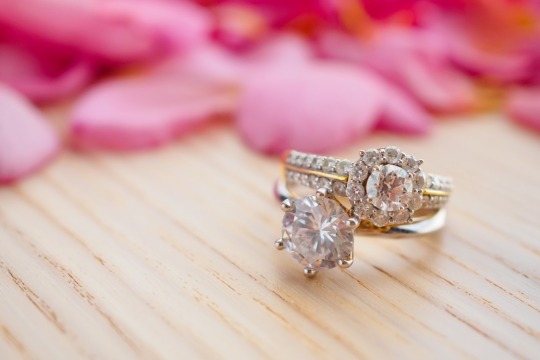
Diamonds generally have a yellowish tint to them, this is referred to as the color of a diamond. The pronouncement of this yellow tint affects the color grade. Diamond color is not to be confused with colored diamonds. Higher quality diamonds are generally white but most others, irrespective of the shape, do have this tint.
Diamonds grading goes from D to Z in accordance with the Gemological Institute of America. Your diamond’s color grade dips with every passing alphabet. Diamond color does have a considerable impact on the price of your diamond.
As mentioned earlier, distinctly colored diamonds are different from diamond color grades. Diamond color is looked upon as a flaw that hinders light from reflecting back on to our eyes off the diamond.
Colorless diamonds are very rare. It is necessary to remember two things, colorless diamonds are not necessarily the best choice in all cases and having the most basic idea about diamond color can get a very good deal on your perfect diamond.
Importance of Your Diamond’s Color Grade?
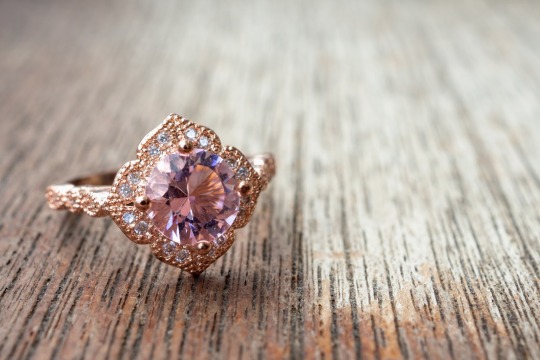
When buying diamonds, you should always segregate color and clarity from cut and carat weight. The reason behind this is because you have to maximize on cut quality and carat weight. In fact, cut quality is something you cannot compromise on under any circumstances.
Color and Clarity have a very different effects on a diamond. These are aspects you want to minimize. In most scenarios, buying eye-clean diamonds is the best option. Eye clean refers to diamonds that seem to be white or blemish-free when looked at with the naked eye.
You might want to opt for a diamond of a high color grade. If you can afford it without compromising on the cut quality then it is completely your choice. But if you are on a budget, it is always preferred to shop for diamonds that appear white. This is the best way to shop for diamonds, without having to break the bank.
Keep these things in mind
The absence of color means your diamond is of a higher value.
Diamonds grades range from D to Z. Jewelry grading is from D to M.
The right ring setting can help hide your diamond’s color.
Get a grading professional to evaluate your diamond color.
Diamond Color Chart
Color Grade
Description
D
D color grade signifies that a diamond is colorless to the naked eye and under a microscope. This color grade is the most premium and most expensive.
E
Hardly distinguishable by laymen, even diamond experts have a hard time telling D and E color grades apart under a microscope.
F
Again very similar to D and E color grades. Very difficult to tell these three grades apart.
G
They are nearly colorless. They might have yellow tints but they are hardly noticeable.
H
These diamonds are nearly colorless. They only exhibit a bit of color under bright light or under a microscope. This is the minimum color grade we recommend for diamonds with large tables, like the Cushion Cut or the Marquise Cut.
I
Nearly colorless but exhibit minute quantities of color when placed next to diamonds of higher color grades. We recommend I color diamonds as the minimum color grade for Princess Cut diamonds.
J
J color diamonds exhibit a faint yellow tint when observed under bright light. This yellow tint is also noticeable in J diamonds with big tables.
K
A slight yellow tint is observable with regard to this color grade. K diamonds are known to have a ‘faint tint.’ These diamonds are perfect when you are on a budget.
L
Diamonds of this color grade have a noticeable yellow tint that can be observed under normal light. L diamonds are relatively cheaper than other color grades.
M
Jewelers regard this as the lowest grade fit for jewelry. M diamonds are hardly distinguishable from K and L diamonds.
N-Z
These grades are not recommended. They have a distinctly yellow tint.
The primary takeaway from the above table is that close color grades are very difficult to distinguish. However, you can rest assured that there will a difference in price from one color grade to the other. We would recommend clear diamonds that seem as colorless to the naked eye as possible. Also, don’t spend a fortune on premium color grades.
The Right Setting
The right setting can work wonders for you. Not only can it hide the color, the right setting can also hide blemishes. Let's look at some popular settings.
White Gold or Platinum Solitaire Ring
Choosing between H to J color grades for Round cut diamonds in a white gold or platinum setting would be ideal. With Asscher, Princess and Emerald cut it is best to stick to anywhere between G to I color grades. For all other diamond cuts anywhere from an F to an H will work.
Yellow Gold Ring
K to M Grade Round Cuts work best with a yellow gold setting. It is important to tell you that in these categories, your diamond is showing faint glimpses of color. It is important to mask it with a Gold setting. Choosing between J and K color grades work very well for Princess, Asscher, and Emerald Cuts. I to J color grade diamonds are best when it comes to all other cuts.
Pave or Halo Settings
Choose G - I Grade for Round, Asscher, Princess, and Emerald cut diamonds in this setting. Anything between F to H grade is perfect for other diamond cuts.
Choosing The Right Color Grade For Your Diamond?

I color diamonds will seem identical to G color diamonds, but the difference in price will be about 25%.
Also, a J or K color diamond would appear eye-clean in a yellow gold setting.
As mentioned earlier, close color grades are extremely difficult to distinguish. It is always a good idea to buy clear diamonds than premium grade diamonds. If you do have the budget for it however, we would not stop you from purchasing premium colored diamonds.
Buying Colored Diamonds
Buying colored diamonds has become much easier thanks to Jewel Hero. Simply log in to the Jewel Hero Website, answer a few questions, and immediately get a list of jewelers near you. Choose the jeweler you like and get a step closer to buying diamonds at the best price. You even have the option of consulting your jeweler online.
So what are you waiting for? Visit Jewel Hero today and get that dream diamond.
0 notes
Text
Why Is It Important To Know About Your Diamond’s Clarity?

The clarity of your diamond determines how free from inclusions your diamond is. The higher the clarity grade of your diamond, the more expensive it will be.
Prioritizing the 4 Cs when buying diamonds is a good plan. However, you don't always have to buy a diamond of the highest clarity grade.
Why?
Let’s find out.
Things You Need to Know About The Diamond Clarity Scale.
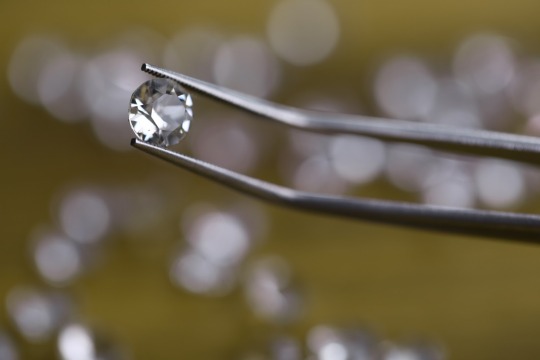
Before we start getting into intricacies, let’s give you a brief idea about the clarity of your diamond.
What is Diamond Clarity?
Natural diamonds are formed in the earth’s mantle and are subject to tremendous pressure and heat. Owing to this, no diamond comes out blemish free.
Diamond clarity grades affect the visual appearance of diamonds. The lesser the amount of inclusions in a diamond the higher the clarity.
Diamond clarity does impact the price of your diamond, but it is difficult to differentiate between close clarity grades. For this particular reason it is always better to buy eye-clean diamonds.
Let us explain in a bit more detail.
GIA Diamond Clarity Scale.
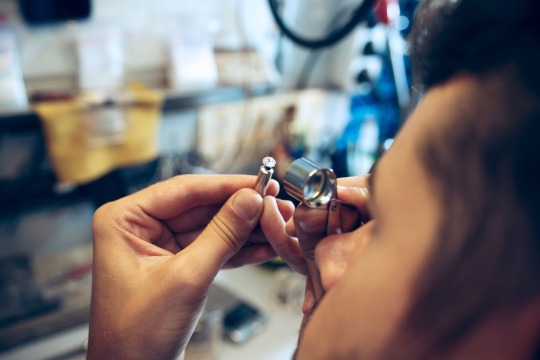
The GIA grades diamond clarity from IF to i1, in certain cases the clarity grade can go down to even i2 and i3. The clarity grade of a diamond is determined by looking at the diamond face-up under 10x magnification.
The factors determining a diamond’s clarity are as follows.
The size of the inclusion in your diamond. The bigger the size of the inclusion, the lower the clarity grade.
The nature of inclusions. This refers to the impact the inclusion has had on your diamond. How deep is it? A blemish is when the inclusion has only penetrated the surface of the diamond.
The number of inclusions.
The location of the inclusions. In case the inclusion is near the centre of the table, then the clarity grade will be affected much more. Inclusions further away from the table are difficult to notice. Inclusions found near the pavilion have the tendency to reflect. The facets work as mirrors and the inclusions are reflected in this case.
The relief refers to the size of the inclusion in contrast to the host diamond. The diamond color is noticed to get darker as the relief increases.
Now that we know what affects our diamond’s clarity let's take a look at the diamond clarity scale.
Clarity Grade
Description
IF/FL
This refers to diamonds that are flawless or internally flawless. Although there is no such thing as a completely flawless diamond. These particular diamonds have very minute blemishes that cannot be deciphered even by experts under 10x magnification.
VVS1 & VVS2
These diamonds contain very very slight inclusions. These inclusions are not noticeable even by skilled graders and diamond experts even under 10x magnification.
VS1 & VS2
These inclusions might be difficult in certain cases and easy in others for skilled graders and diamond experts to spot under 10x magnification.
SI1 & SI2
Inclusions are noticeable to skilled graders under 10x magnification.
I1, I2 & I3
Inclusions are obvious under 10x magnification and may even affect the brilliance and transparency of the diamond.
What are the Different Kinds of Inclusions a Diamond Can Have?
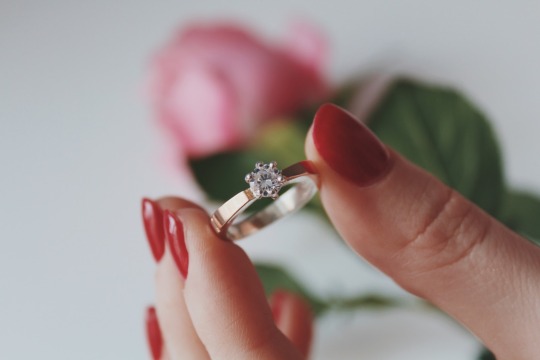
There are several kinds of inclusions that can affect a diamond’s clarity grade.
Cloud: A cloud refers to a bunch of inclusions within a diamond. These inclusions can negatively affect the brilliance of a diamond and add a hazy look to it. If this inclusion is in abundance, it’s referred to as a cloudy diamond.
Graining: Occurs due to irregular crystal growth. This particular inclusion causes internal graining that appears as white or reflective lines. This inclusion also makes the diamond seem hazy.
Cavity : Cavities within a diamond may appear colorless depending upon the type of mineral which is within the diamond. In case the crystal cavities are colored, they have a much more pronounced effect on the clarity grade of the diamond.
Feather : This is a small crack within a diamond. Depending on the position of the crack, it may appear transparent or not.
What is a Clarity Plot?
A clarity plot is a figure that helps determine the imperfections within a diamond. The flaws are found by a skilled grader under 10x magnification. A GIA or AGS report generally has the clarity plot included within it.
Seeing the clarity can help you determine if the diamond’s inclusions are observable to the naked eye or not.
How to Choose Your Diamond’s Clarity Grade?
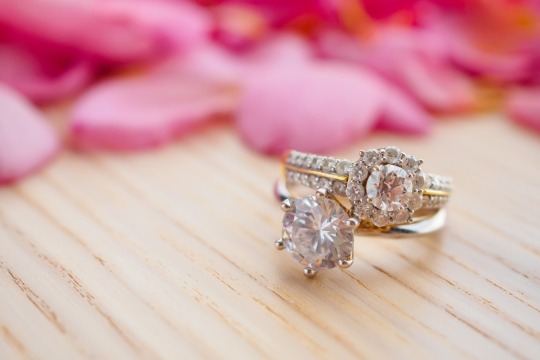
It is best to choose an eye-clean diamond rather than spend a lot on a diamond with a high clarity grade. A diamond is considered to be eye-clean when you cannot find any noticeable inclusions. This generally refers to SI1 & SI2 or VS1 and VS2 diamonds.
The inclusions in these diamonds are only visible under a microscope with 10x magnification. In the case of VS1 & VS2 even diamond experts find it difficult to spot inclusions with a microscope. When it comes to regular people, it is always the best idea to buy eye-clean diamonds.
It is important to buy GIA certified Diamonds, but there is no need to spend a fortune over your diamond’s clarity grade.
Buying Your Diamond
Diamond shopping has never been easier. Simply log in to our site, tell us what you want and answer a few questions and get connected to jewelers near you. You can choose to consult these jewelers online or visit their stores in the flesh.
So what are you waiting for? Visit our website today.
0 notes
Text
Jewelry Stores In Atlanta That Is Worthy of Taste
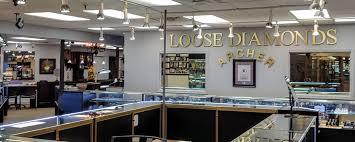
Who does not want a piece of bling and a token of sparkle? Any piece of jewelry, be it for women or men have an equal amount of allure and affection. It is a gift that is always treasured.
Be it gold, diamond, or platinum, any jewelry lover would want these three types of jewelry in their closet. Well, jewelry stores in Atlanta have gained quite a reputation for producing exquisite jewelry pieces of fine taste. Be it a big franchise, or a local upcoming store, there is a buffet of jewelry store options near you in Atlanta that represents fine taste and style.
Let's see which of the jewelry stores in Atlanta made into our list based on their reputation, professional experience, and legacy of craftsmanship:
1) Archer International Imports Inc.
Started in the early 1970s, Archer International Imports Inc. is a legacy run by a family of jewelers in Atlanta. They have customized services for buyers and are known for their traditional craftsmanship. It showcases a wide variety of diamonds, especially loose diamonds. These are trademarked with laser inscriptions and certified by the GIA. Their jewelry collection in Atlanta presents a wider variety of engagement rings and almost 14 carats to 18 carats of platinum jewelry. They also have customized services in personalized jewelry design and repair, jewelry engravings, etc.
Address: 250, 6N101 Ted Turner Dr. Building 3 Suite, Atlanta
2) Solomon Brothers Jewelers
Solomon Brothers Jewelers have a craftsmanship legacy of 38 years. In the jewelry industry, their reputation is built for creating diamond jewelry of fine taste for their customers. The jewelry store in Atlanta is known for its fine collection and valuable services which have retained customer loyalty for over 4 decades amongst customers and made their jewelry shopping experience even more worthy and enjoyable. Solomon Brothers Jewelers are specialized in platinum collections of rings, watches, vintage wedding bands for men. Customers also get to choose jewelry from designer labels such as Gucci, Karl Lagerfield, Verragio, etc. It is also one of the few jewelry stores in Atlanta that gives a 10 percent discount on engagement rings and wedding bands to military officials who are serving their duty for the country.
Address:3340 Peachtree Rd NE #1700, Atlanta, GA 30326
3) Worthmore Jewelers
One of the reputable jewelry stores in Atlanta, Worthmore Jewelers has a legacy of 26 years in jewelry design. They have a specialty in making gemstone jewelry for engagement rings, necklaces, wedding bands for any shape and style be it Solitaire, Vintage, or Bezel. Their wedding bands and engagement rings are designed for comfort fittings. Worthmore Jewelers also are known to design Three-Stoned engagement rings. They also have been lauded with multiple awards such as the Best Jeweler of the Year 24kClub, "Best In Atlanta" by Atlanta Magazine.
Worthmore Jewelers offer customized services in jewelry design and jewelry repair. They are one of the few jewelry stores in Atlanta to have certification for repairing Rolex Watches.
Address:500 L3 Amsterdam Avenue, Atlanta, GA 30306
4) Armen and Joseph Jewelers
Located in Duluth, Atlanta, Armen, and Joseph Jewelers have carried their craftsmanship since 1954. They are known for creating custom jewelry, especially in diamond engagement ring designs. Their services include ring sizing, evaluation of jewelry, jewelry polishing, and cleaning. Their value-added services have retained satisfaction in the customers of Atlanta.
Address: Duluth, GA 30097
5) D. Geller & Son
No, it has no relation to Ross Geller. But, D. Geller Son is family-owned jewelry business. Their services include ring sizing, evaluation of jewelry, jewelry polishing, and cleaning. The jewelry store in Atlanta has time-valued services and repairs and precious stones within a few hours. They also a variety of designer labels, like Tacori, Artcarved, CoastDiamond for customers to choose their jewelry.
Address:2955 Cobb Parkway S.E., Suite 230 Atlanta, GA 30339, call (770) 955-5995, or visit their website.
Now, next time in Atlanta, do not forget to visit these local jewelry stores and get a fabulous jewelry shopping experience that is worth it.
0 notes
Text
Let's See Things With Some Clarity: The Most Important C To Look For In A Diamond
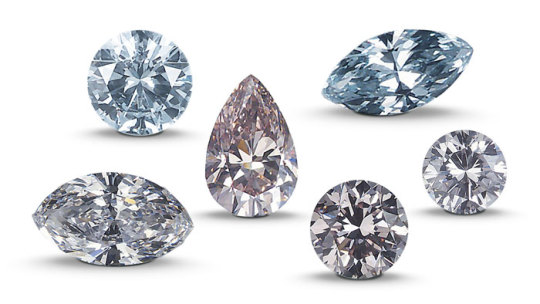
becomes a labor-intensive process.
Things look better when they appear just as clear they are in front of our eyes. Don't you all agree? A clear sunny sky, a clear glass of water, and the most worthy of it all is a clear set of diamond jewelry with no inclusions.
When looking for a diamond's worth, clarity in a diamond is one of the important Cs to keep in mind while examining if it is worth your money. Finding clarity in diamonds can be quite frustrating as finding clarity in life or a math problem.
If one is buying diamonds for the first time in their lives, evaluating the clarity of a diamond can be quite a task to identify the inclusions and understand what effect it has on the value of the diamond.
To make this all easy and, well, we may say a bit "clear", a diamond clarity chart has been created to assess the clarity of the diamonds before buying them. But before we dive into the nitty-gritty of the diamond clarity chart, let us first know the answer to one of the big question-
What is Clarity?
To simply put it, clarity in every gemstone is how much light does the stone allow passing. It is a grading that decides the flaws present on the surface of the gemstone. Some of these flaws are visible to the naked eye and some are invisible and do not affect the clarity at all.
When it comes to rare gemstone-like diamonds, the clarity of diamonds is graded qualitatively on their appearance. The flaws and inclusion, the diamond has on its surface, the higher its clarity will be on the diamond clarity chart. The value of the diamond also rises with its clarity.
Diamond cutting of naturally mined diamonds and then shaping them to be free of inclusions
Sometimes, only the rarest of the diamonds have zero inclusions and for the rest, it needs manual treatment to enhance their clarity.
Now you know what is the clarity of a diamond, let us know how to measure the rarity of a diamond through a diamond clarity chart.
The clarity of a diamond is graded on a scale by professional gem traders. This recorded grading of every diamond is useful for letting the buyers know the value of the diamond's clarity assessment.
The Gemological Institute of America has a diamond clarity chart that grades a diamond's clarity through a common scale from the range of flawless to imperfect.
Let us take a peek into this diamond clarity chart and its grading scale:
1) Flawless (FL) and Internally Flawless (IF)
'Flawless' diamonds are the rarest of all. Even under a high-powered microscope that zooms deep inside, these diamonds in the clarity chart have no inclusions and are visible to the eyes. These blemishes on the surface of the diamond include scratches and can be easily removed with treatment.
Inclusions, on the other hand, include the crystals formed inside the diamond which can affect the clarity of the diamond grading chart. Diamonds that are from external blemishes and inclusions on the inside are known as 'Internally Flawless' diamonds. These are rare and high-priced price diamonds that have less than 2 percent of the market share in gem trading.
2) Very Very Slightly Included (VVS)
In the diamond clarity chart, 'Very Very Slightly Included' diamonds have a minute or a negligible amount of inclusions that can no without any notice. Only expert gem traders can evaluate its inclusion by putting the diamonds under a 10x microscope. These diamonds have high clarity in the diamond clarity chart, they automatically come at a great price.
3) Very Slightly Included (VSI)
Diamonds that are 'Very Slightly Included' fall into the middle range of a diamond's clarity in the diamond clarity chart. These diamonds have minor inclusions within them which do not affect their clarity even though several inclusions are more in number. The inclusions present in these diamonds can be assessed under a microscope.
4) Slightly Included (SI)
There is a dip in the diamond clarity chart when the diamonds fall into the range of 'Slightly Included' diamonds. Though the inclusions are not visible to the eyes, these diamonds have a duller and foggy look. These diamonds come at a lower cost.
5) Included
Lastly, the lowest grade in the diamond clarity chart is the 'Included' diamonds. The inclusions are visible to the eyes. The 'Included' diamonds are not worth the money as they have low durability.
These are simply the grading scales that pits the diamonds into different categories in the diamond clarity chart. Still, when it comes to clarity, other factors determine the clarity of diamonds represented in the grading chart. Let's see what they are:
1) Size Of The Inclusion
If the inclusions are bigger they will automatically have a bigger impact on the diamond clarity chart and make the diamond clarity low on the grading scale.
2) Nature Of The Inclusion
The nature of the inclusion assesses the depth at which the inclusions are present. If it just lies on the surface level of the diamond, then it is regarded as a blemish. This will not affect the clarity of the diamond in the diamond clarity chart.
3) Number Of Inclusions
The clarity of the diamonds drops in the clarity grading chart if there are more number inclusions present within the diamonds.
4) Location Of The Inclusion
The location of the inclusion within the diamond also determines its clarity in the diamond clarity chart.
If the inclusion is located on the culet, it will not affect the clarity of the diamond. But if present in close distance to the center, it will hamper the quality of the diamond. Other locations of the inclusions that determine the clarity of the diamonds in the diamond clarity chart are the inclusions found in the pavilions of the diamond which leads to the reflection of the inclusions.
5) Relief Of The Inclusion
If the inclusions in the diamonds are noticeable in comparison to a host diamond, this means that it has a higher relief. diamonds of higher relief have a darker shade which affects their grading in the diamond clarity chart.
Now the big question all of you want to know-
How will the clarity affect the pricing of the diamonds?
Though the diamond clarity does not affect its outlook, the price of a diamond is largely dependent on its clarity. The higher grading in the diamond clarity chart means that the diamond carat is rare, hence the cost also increases simultaneously.
Flawless and Internally Flawless diamonds are the most expensive ones which will make your wallet lighter. While the Slightly Included diamonds come at half price compared to the others.
You can always opt for a diamond that has blemishes and can get treatment enhancements to remove it, but it will not be a permanent fix.
The best option is to buy diamonds that are Very Slightly Included as the inclusions are not visible to the eyes and come at a lesser cost. You can smartly save on your budget by choosing a small size of the diamond, perhaps in Princess Cut or Cushion Cut where the inclusions will not be visible to the eyes.
Now, the final question-
How will you know which clarity is better?
Flawless diamonds are great but if you top it with color and carat, you might spend a lot.
To know which diamond clarity is the best, you need to know whether clarity matters or appearance matters.
If you are just buying a simple diamond ring, choosing the one with inclusions can save you a lot of money as the diamond ring will look good in front of the naked eye.
When diamond shopping, it is better to know what you will do with diamonds. This makes it easier for anyone to prioritize whether they want a good cut, clarity, or a bigger carat.
0 notes
Photo

Find top local area jewelers with a knowledgeable staff ready to help you make an engagement ring, find that perfect piece of jewelry, quote a repair, provide an appraisal or even buy your jewelry. By providing your criteria, Jewel Hero will help curate your final decision by connecting you to local area jewelers.
https://jewelhero.com/
#online jewelry stores#best jewelry stores#best online jewelry stores#best jewelry stores near me#online diamond jewelry store
0 notes
Photo

Find top local area jewelers with a knowledgeable staff ready to help you make an engagement ring, find that perfect piece of jewelry, quote a repair, provide an appraisal or even buy your jewelry.
https://jewelhero.com/
1 note
·
View note